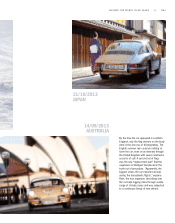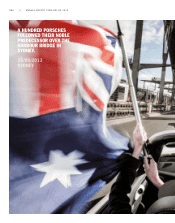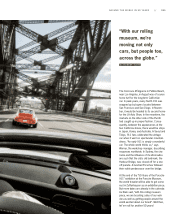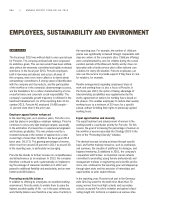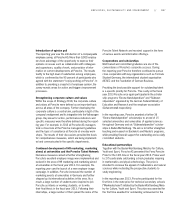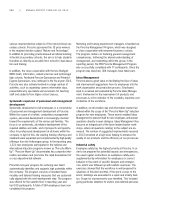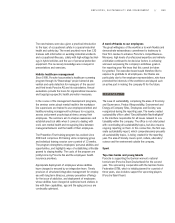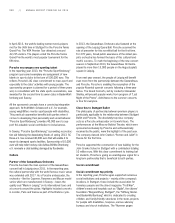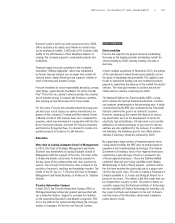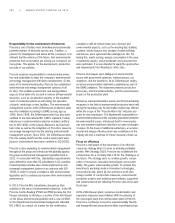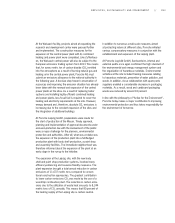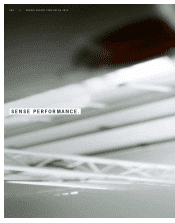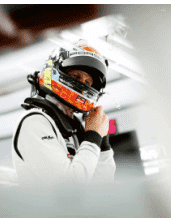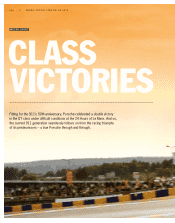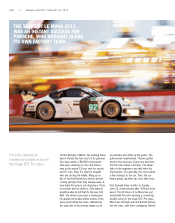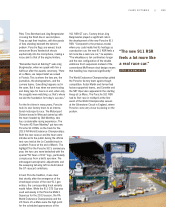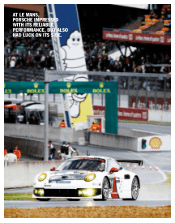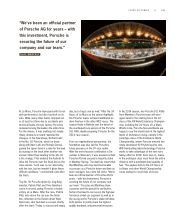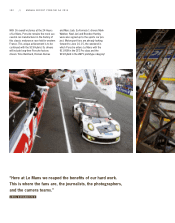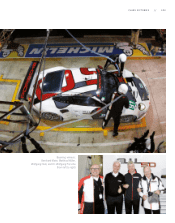Porsche 2013 Annual Report Download - page 95
Download and view the complete annual report
Please find page 95 of the 2013 Porsche annual report below. You can navigate through the pages in the report by either clicking on the pages listed below, or by using the keyword search tool below to find specific information within the annual report.At the Weissach facility, projects aimed at expanding the
research and development center were pursued further
and implemented. The construction measures for the
expansion of the central power plant with its combined
heating and power plant were completed. Like Zuffenhaus-
en, the Weissach central power will also be subject to the
European emissions trading system from 2013 This means
that, for every metric ton of carbon dioxide (CO2) emitted
into the atmosphere as a result of burning natural gas and
heating oil in the central power plant, Porsche AG must
submit an emissions allowance to the national authority in
the following year. A decisive step toward conservation of
resources and improving the emission situation has already
been taken with the renewal and expansion of the central
power plants at the sites. As a result of replacing boiler
systems and installing highly efficient combined heating
and power plants, less fossil fuel is required to cover the
heating and electricity requirements at the site. However,
energy demand and, therefore, absolute CO2 emissions is
increasing due to the constant expansion of the sites and
the integration of additional buildings
At Porsche Leipzig GmbH, preparations were made for
the start of production of the Macan. Timely approval,
planning and implementation of approval documents under
emission-protection law with the involvement of the public
were a major challenge for the planners, environmental
protection and authorities. After all, what was at stake was
the expansion of the production plant into a full-fledged
production plant with body shell production, a paint shop
and assembly facilities. The immediate neighborhood was
therefore informed about the expansion of the plant at an
early stage in the run-up to the initiative.
The expansion at the Leipzig site, with the new body
shell and paint shop production systems, involved many
efficiency-enhancing and resource-friendly measures. The
plant expansion brought a total annual reduction in carbon
emissions of 11,637 metric tons compared to conven-
tional construction approaches. The greatest contribution
to lower carbon emissions CO2 was made by the use of a
woodchip combustion plant. The reduction in carbon emis-
sions due to the utilization of waste heat amounts to 8,244
metric tons of CO2 annually. This means that 80 percent of
the heating supply at the Leipzig site is carbon neutral.
In addition to numerous small-scale measures aimed
at protecting nature at different sites, Porsche initiated
various compensatory measures in conjunction with the
establishment and expansion of the Leipzig plant.
At Porsche Logistik GmbH, Sachsenheim, internal and
external audits once again confirmed the high standard of
the environmental and energy management system and
the organization of hazardous materials. Environmental
activities at the site included training measures relating
to hazardous materials, prevention of water pollution, and
waste. In addition, close collaboration with spare parts
suppliers enabled a considerable decrease in packaging
materials. As a result, wood and cardboard packaging
waste was reduced by around 10 percent.
In line with the philosophy of “Active for the Environment”,
Porsche today makes a major contribution to improving
environmental protection and thus takes responsibility for
the environment of tomorrow.
EMPLOYEES, SUSTAINABILITY AND ENVIRONMENT // 093


